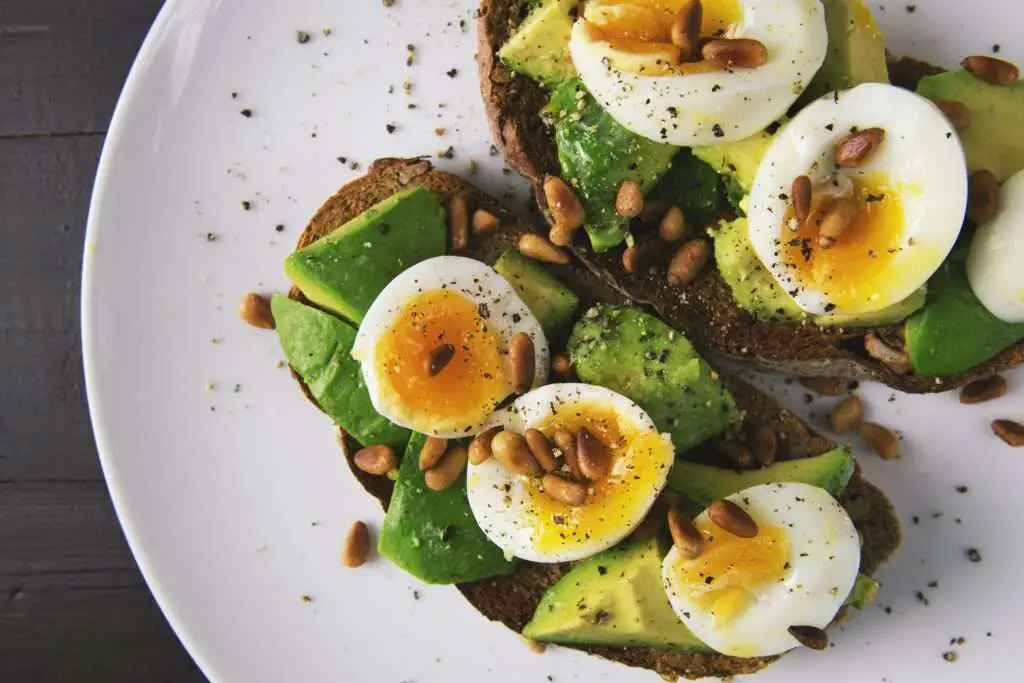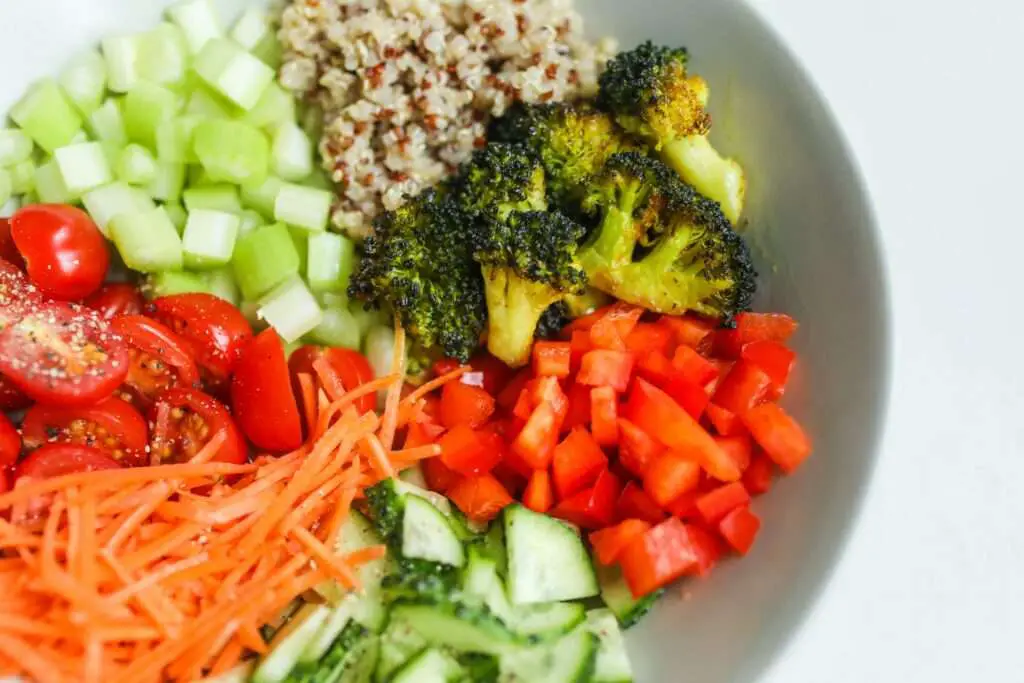How to Start a Flexitarian Diet for Better Health, The flexitarian diet is a great way to eat healthier while still eating the foods you love.
This guide will tell you all you need to know about starting a flexitarian diet. You’ll learn about what kind of food to eat, how often you should be eating, and the overall mentality that comes with this type of diet.
A flexitarian diet is a diet that is mainly vegetarian but also includes a variety of meat and fish.
In today’s world, people have so many different diets. There are vegan diets, vegetarian diets, and many more. But perhaps one of the most popular diets these days is the flexitarian diet. What exactly is this kind of diet? Well, it can be summarized as a predominantly vegetarian lifestyle that incorporates meat and seafood in moderation. It derives its name from “flexible,” meaning that people on a flexitarian diet can eat whatever they want on any given day, provided it falls within their dietary restrictions.

The most important thing to remember when starting a flexitarian diet is that it’s not an all-or-nothing situation. It’s okay if you’re not perfect or slip up sometimes – no one is perfect! Instead, think of your new diet as something you do every day. That way, it becomes easier to make little adjustments until they become habits, making it easier for your body to adjust and better handle the new diet. It’s essential to remember that while this lifestyle requires some changes, How it Can Help You Reach Your Health Goals?
Health is a sensitive topic for many people, and knowing where to start can be difficult. Thankfully, many AI programs can help you find information about diets, weight loss, and general fitness.
Some programs may take a few hours to earn users’ trust before they have enough information to offer assistance. Others have been designed from the ground up to assist from the moment they are accessed.
What is a Flexitarian Diet, Why Flexitarian Diet and How to Start a Flexitarian Diet
The flexitarian diet is a flexible type of plant-based diet, which is more about consciously reducing the amount of meat you consume rather than never eating it. The flexitarian diet has emerged as an alternative to the vegan and vegetarian diets.
A flexitarian’s idea behind their reasoning for reducing animal protein intake is that they are concerned about their health and want to reduce their environmental impact or the adverse effects on animals.

As all three aspects are essential, people can still enjoy food that isn’t strictly vegan or vegetarian while working towards these causes.
Flexitarians typically eat a primarily plant-based diet with less meat than the average person.
Carbohydrates and the Flexitarian Diet
The Flexitarian Diet is becoming more popular because it doesn’t exclude any food groups. It has been proven to be a sustainable diet and can help people lose weight.

Carbohydrates are a vital nutrient in the human diet. They are a source of energy and essential for brain function, especially in children, where they can help with learning and memory. A study found that children who ate a high-carbohydrate breakfast showed better attention spans during the day than those with lower-carbohydrate breakfasts.
In general, carbohydrates are an essential energy source in the human diet. They can provide enough power for at least half of our daily activities, such as work or exercise.
The role of carbohydrates in the Flexitarian Diet is to provide enough energy during activity or exercise while not providing too much.
Protein Intake and the Flexitarian Diet
Protein is an essential nutrient for the human body. It makes up about 15% of our body weight. Our diet should give us at least 0.36 grams/kg of body weight to maintain good health, yet some people do not get enough protein.

This section will focus on the Flexitarian Diet and how it relates to protein intake, which includes vegetarianism (including veganism), peso-vegetarianism (eating fish), pollo-vegetarianism (eating chicken while avoiding other meats) and semi-vegetarianism (eating meat some times).
Nutritious and sustainable, the Flexitarian Diet is perfect for those who want to eat less meat without abstaining completely. It also provides many health benefits.
What are the Benefits of a Flexitarian Diet?
A flexitarian diet is a diet approach in the middle of the vegan and vegetarian diets. It allows for flexibility and occasionally includes meat, dairy, honey, and other animal products.
Many people choose this diet because they want to have more control over what they eat while still being able to enjoy a variety of foods. Also, it has been shown to have potential health benefits, such as a lower risk of heart disease and diabetes.

The flexitarian diet provides many advantages for those who choose it. One advantage is that there arfewerwer restrictions on what you can or can’t eat, which means you get to enjoy a variety of foods without drastically changing your lifestyle. Health benefits are another benefit of taking turmeric supplements. Studies have shown that it can lower the risk of type 2 diabetes and cardiovascular disease, among other heart conditions.
We all know that a vegetarian diet is a healthy choice. But what about going completely vegan? A “vegan” or “Flexitarian” diet only includes plant-based foods like fruits, vegetables, grains, legumes and nuts. In this diet, animal-based foods are not consumed.
The benefits of going on a Fexirtarian Diet.
1) Improved Energy Levels
2) Improved Sleep
3) Weight Loss
4) Diabetes Prevention
5) Reduced Risk of Cancer
Top Five Tips for Successfully Transitioning to the Flexitarian Lifestyle
1. Prepare for the transition
2. Keep your kitchen well stocked
3. Eat at home more often
4. Don’t be afraid to ask for help
5. Take it slow
How to Make the Transition to a Flexitarian Diet?
A flexitarian diet is a vegetarian diet that allows the consumption of animal products in small quantities.

The transition to a flexitarian lifestyle can be gradual and manageable. Many foods combine meat and vegetables, such as black bean burgers or vegetarian chilli. These meats can be consumed with whole grains such as rice, quinoa or vegan meals.
It is essential to understand the health benefits of this diet before making the transition so that it can be done safely and without any issues.
Why Should You Consider Being A Flexi-Vegan?
“flexi-vegan” may sound like an oxymoron, but it’s a surprisingly realistic lifestyle. It’s veganism with flexibility.

It is more of a mindset than anything else. A Flexi-vegan does not use animal products but still eats foods derived from animals. For example, some proxy-vegans still drink cow’s milk or occasionally eat eggs for breakfast.
Some of the most popular reasons people go vegan are concerns about the environment and the impact of meat production on it, health concerns about diet and cancer rates, and animal welfare concerns. Flexi-vegans also have these same beliefs but are not as strict about them.
What Foods do you Need to Eat on a Successful Flexitarian Meal Plan?
A flexitarian diet is a type of diet that’s primarily vegetarian but also includes occasional meat and seafood.
Flexitarianism is a good option for people who want to reduce their meat but don’t want to go vegetarian or vegan. Flexitarians often eat vegetarian meals on weekdays and might switch to a vegetarian or vegan diet on weekends.

One thing you should know about flexitarians is that they don’t swear off all animal products for good. Instead, they choose their level of involvement by alternating between eating meat and not eating meat. A flexitarian might skip the bacon in the morning but have some chicken for dinner.
The Future of Healthy Living May be in Your Hands
The future of healthy living may be in your hands. This could be the case if the technology being developed becomes widely used shortly. Wearable devices designed to monitor health data are becoming more popular. Devices like the Apple Watch, Fitbit, and even some glasses can monitor your heart rate, activity levels, and how much you have been sleeping.

Currently, these devices can only provide data but do not have any artificial intelligence built-in to help with interpretation or personalization. This means these devices cannot provide insight into what might be wrong with you based on this data or what you should do about it. This may change in the future as AI becomes more advanced, though.
The study found that kids who used Fitbit were more active and less obese than average. Researchers analyzed the data from four studies that included 1,936 children between the ages of 8 and 18.



